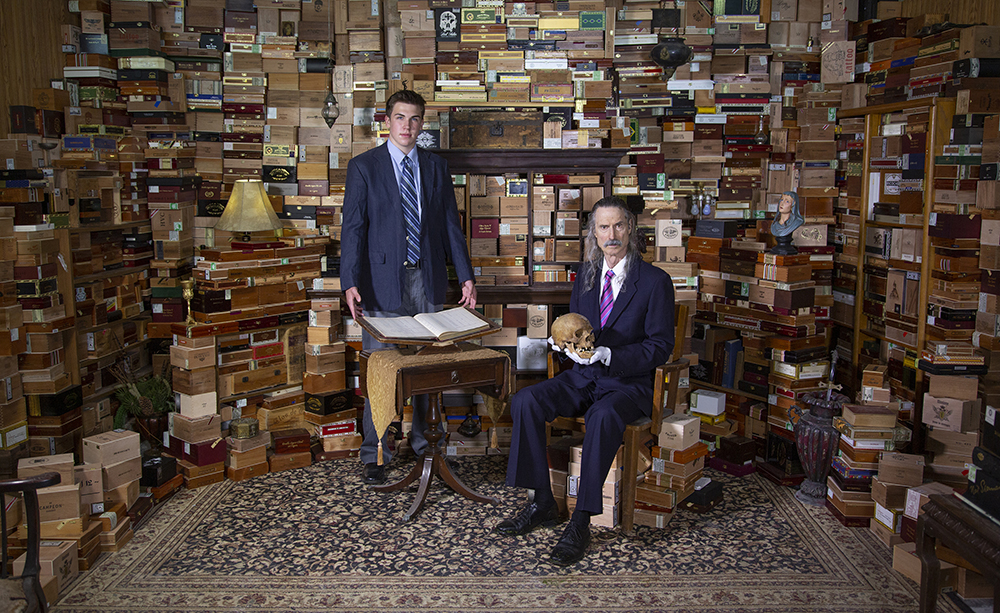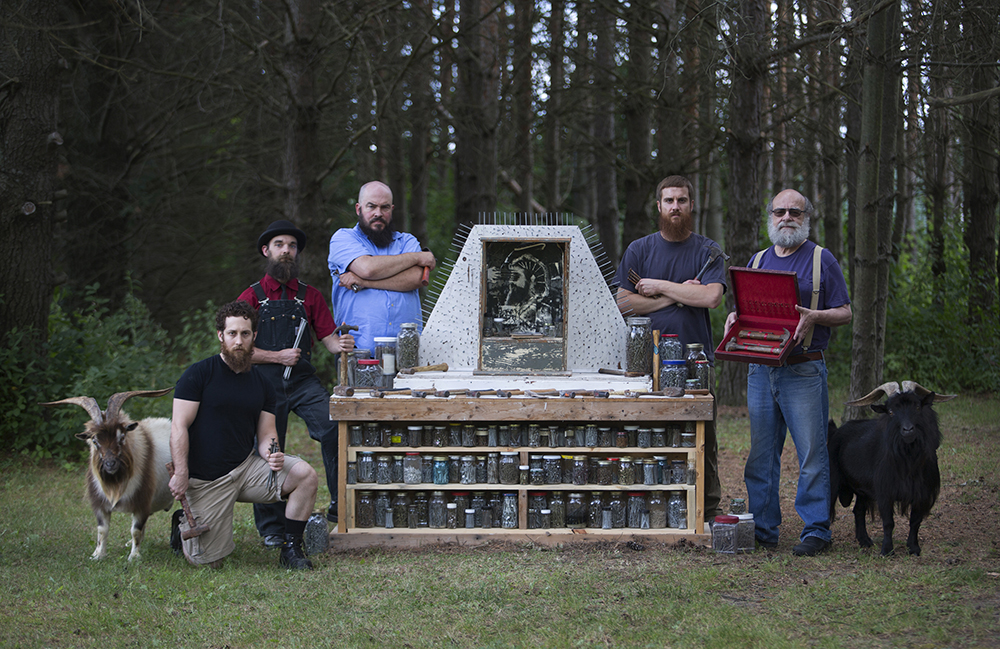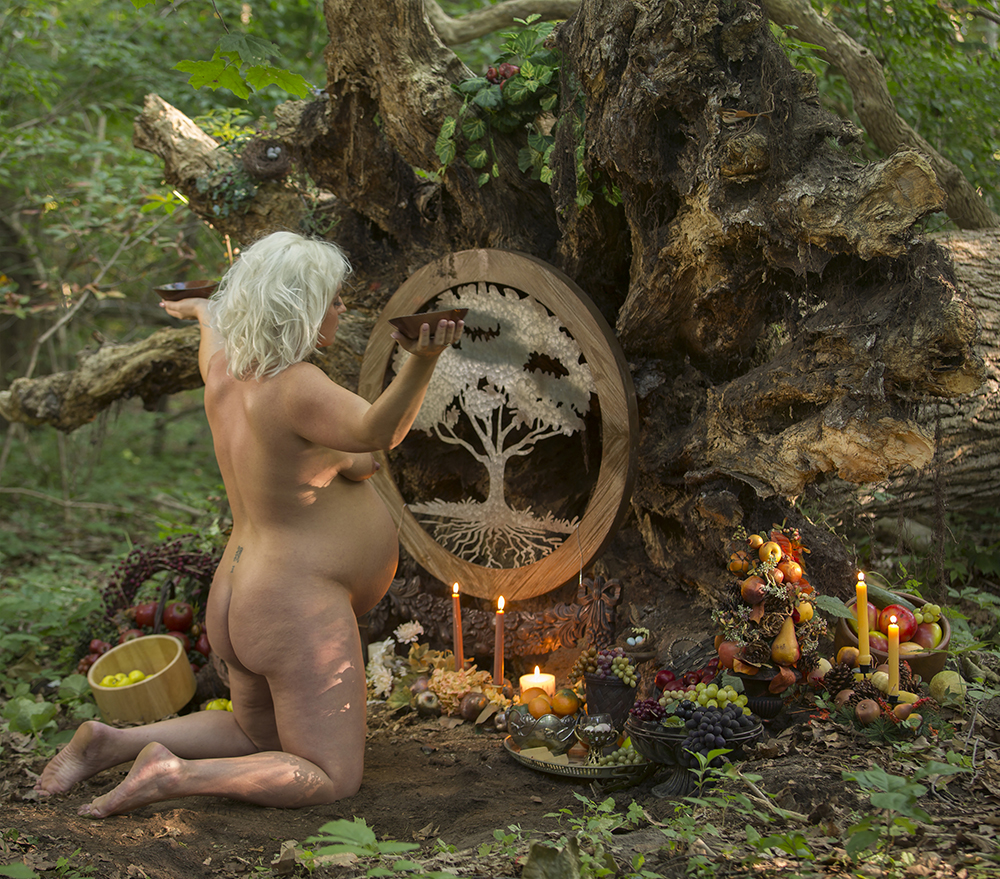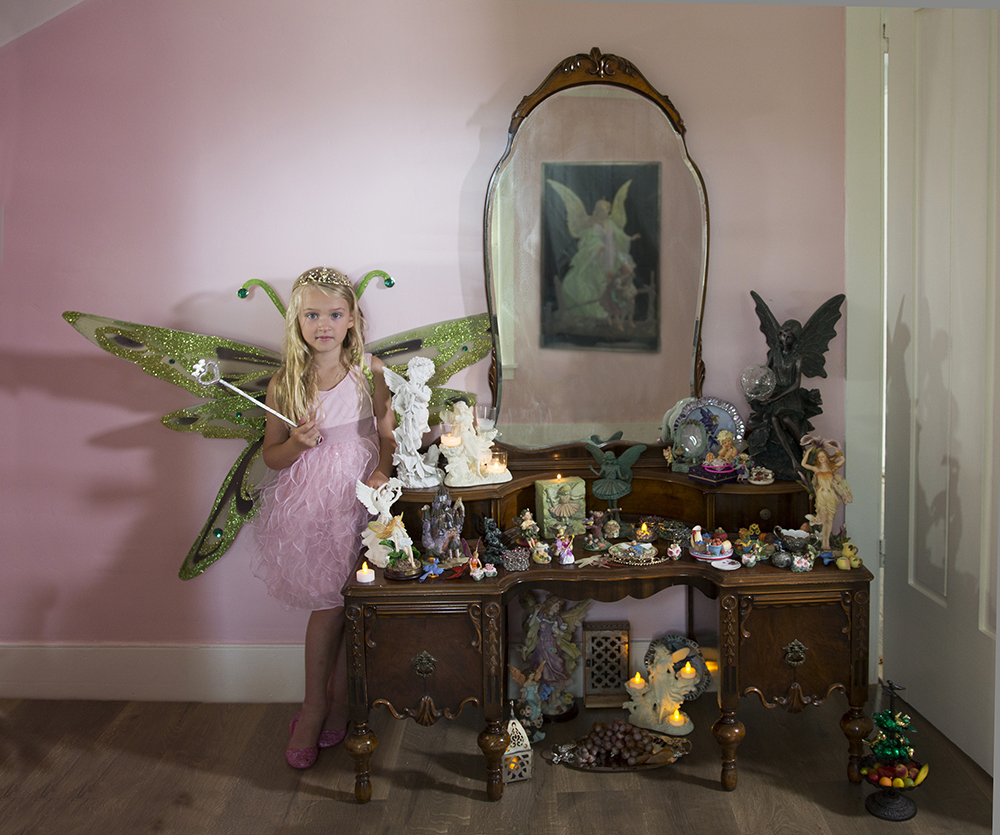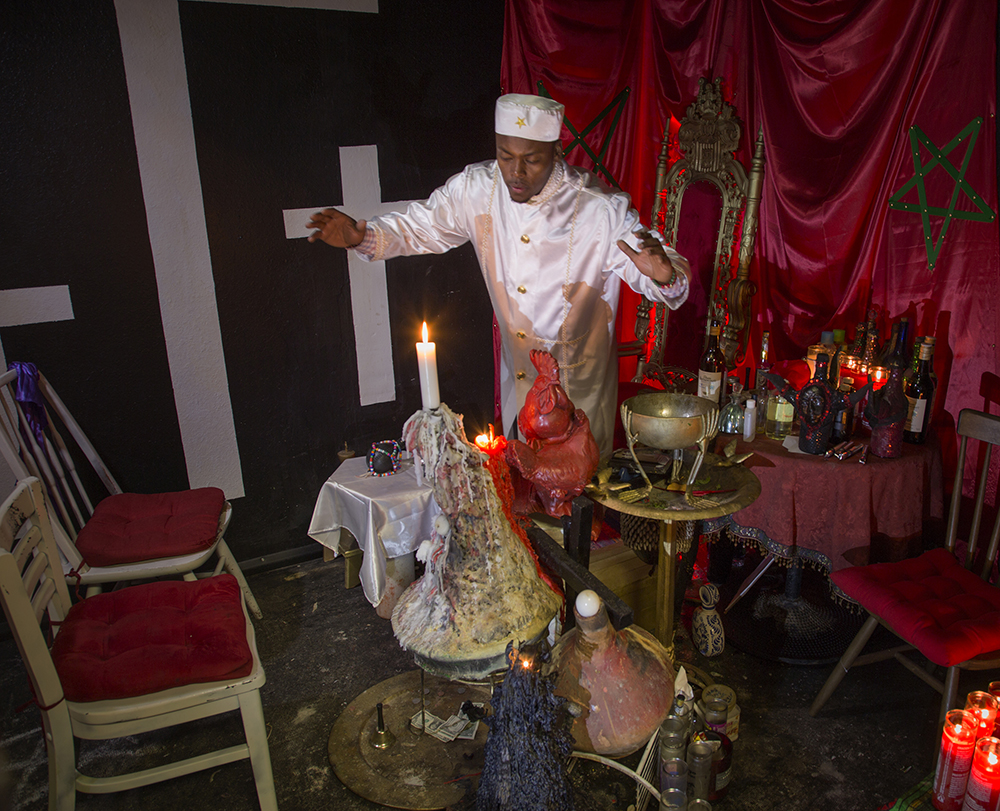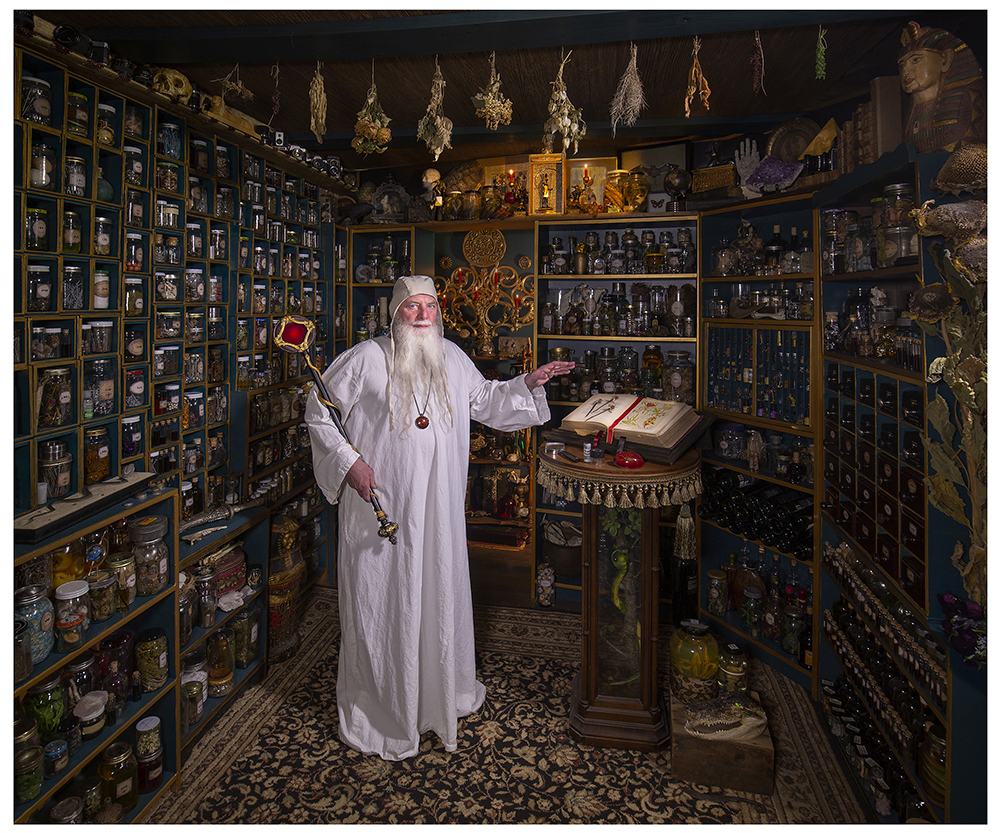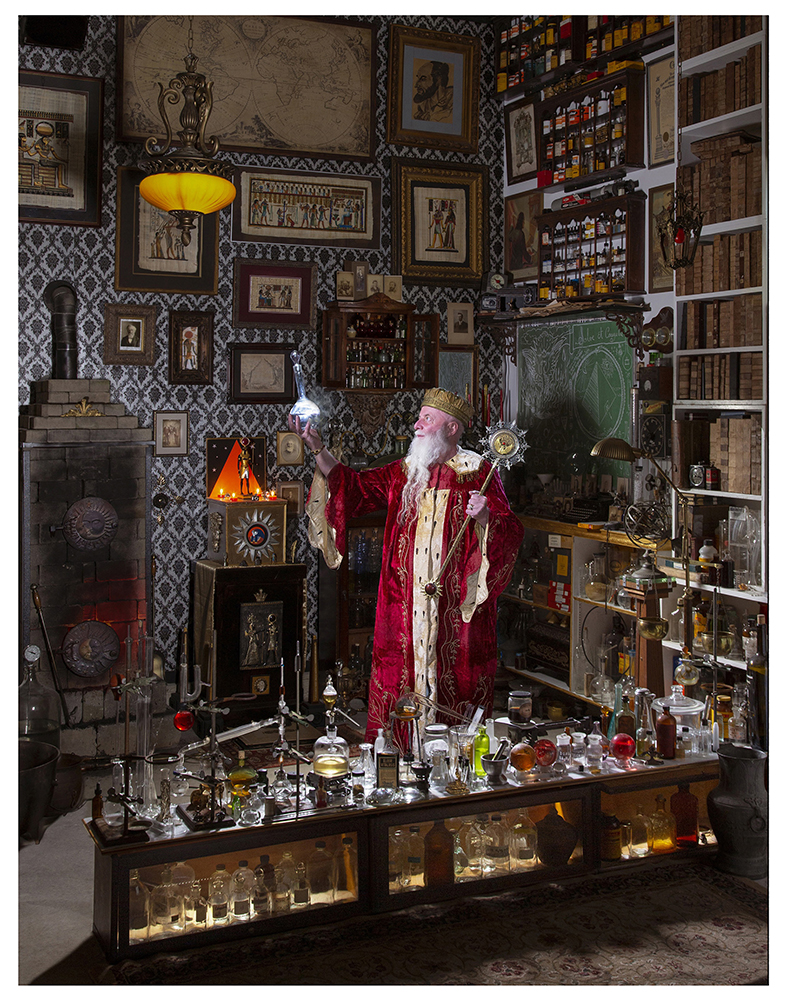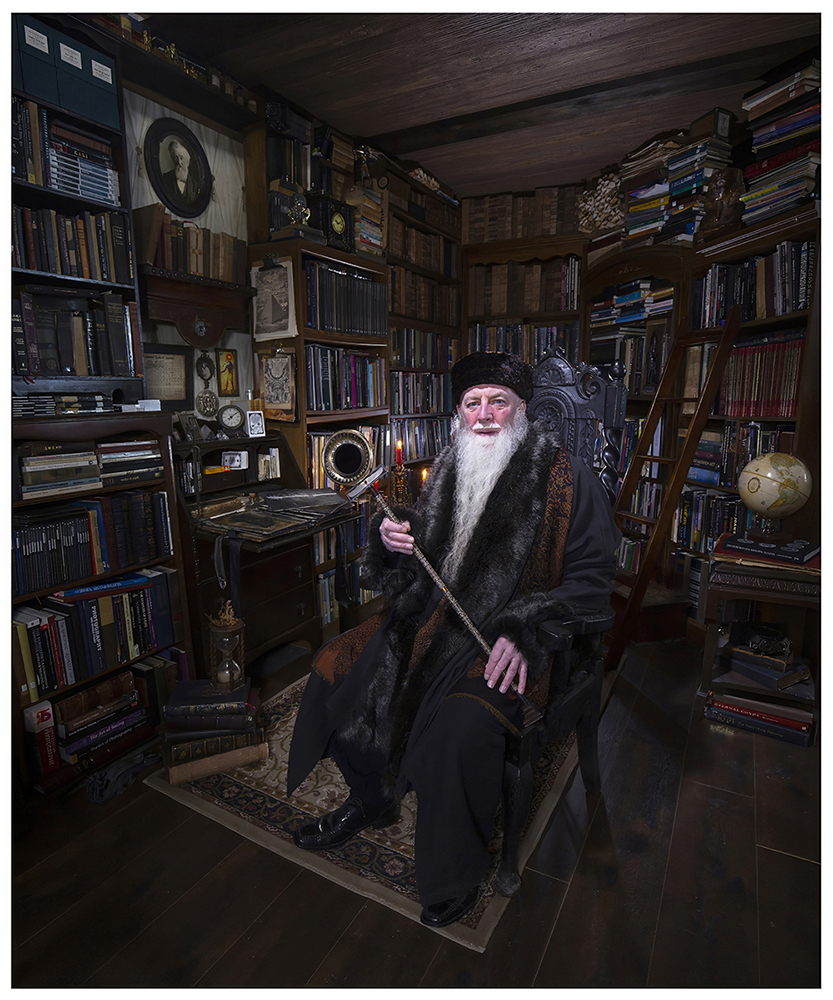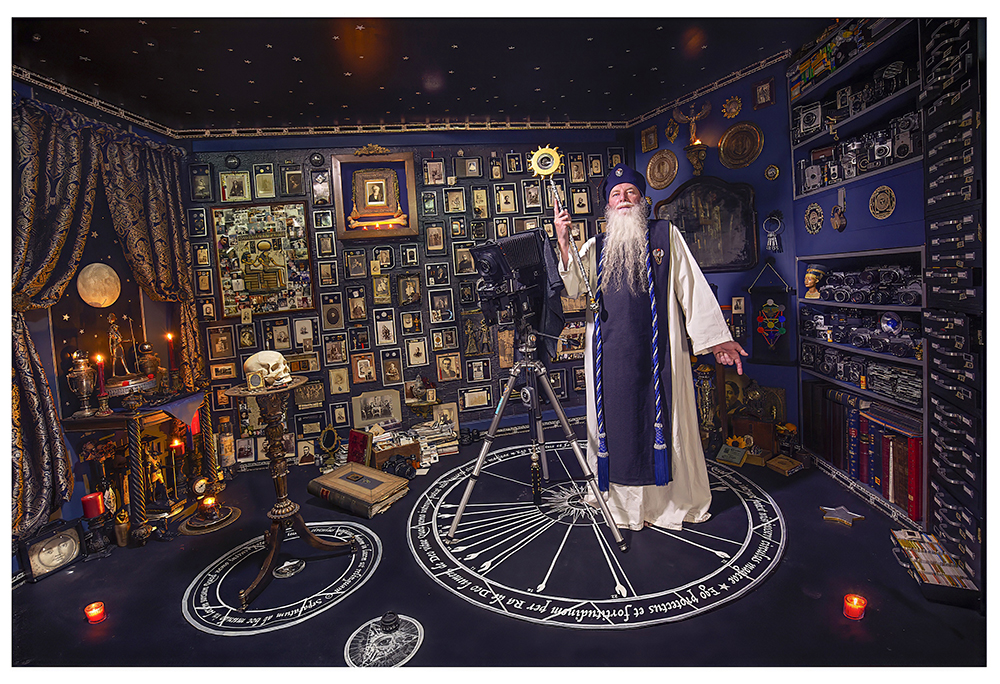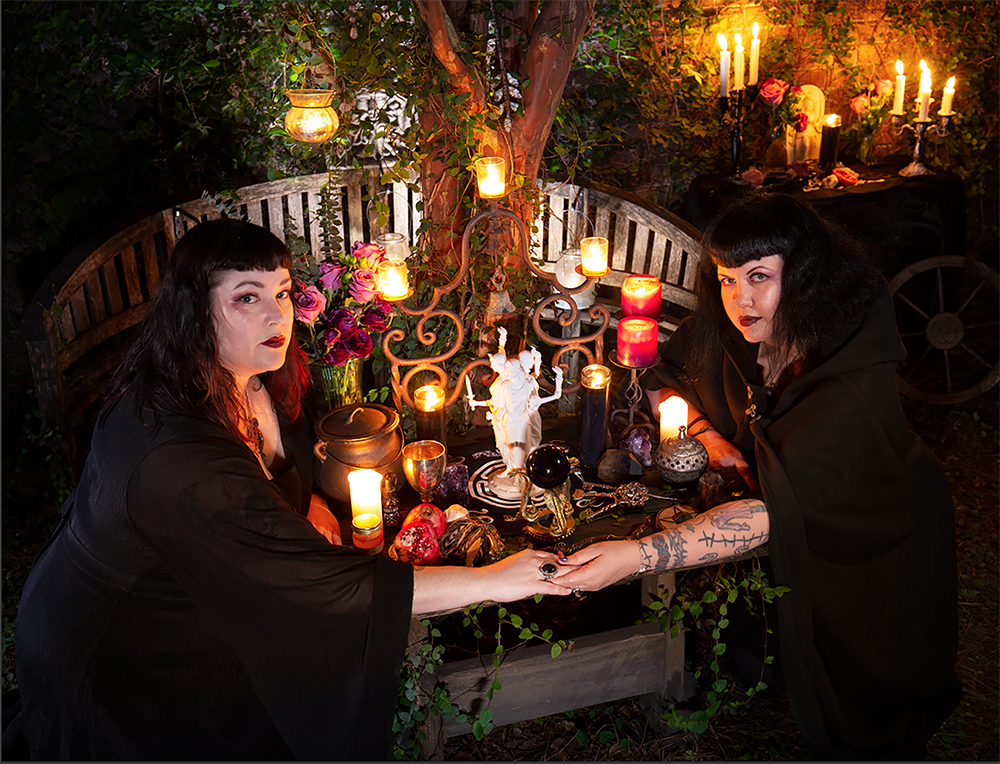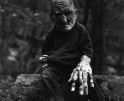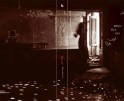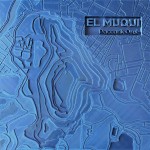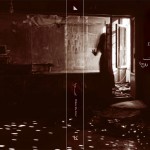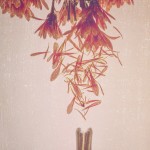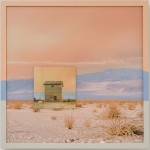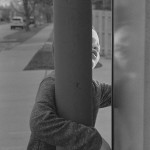From Altars to Alchemy: The Photography of Garin Horner
In 2017, while I was in grad school preparing to graduate, I brought my portfolio to the Portfolio Throw Down at the National S.P.E. in Orlando. As I wandered around, looking at other portfolios, I didn’t meet Garin Horner that night, but he took my business card. Weeks later, he called to invite me to participate in an exhibition during the Midwest regional S.P.E. in Peoria, Illinois. There, I first encountered his work, “A Photo-Ethnographic Study of Private Spiritual Shrines & Altars.” Every time I’ve seen Garin since then, he has been generous, enthusiastic and friendly. Having seen an earlier version of the work, I was surprised by how much it has evolved, especially given that you’re asking people to invite you into their personal and sacred spaces.
Horner is about to release a book of the work featured today: A Feather on the Breath of Ra: Conversations with an Alchemist on Photography, Light, and Magic.
For over 30 years Garin Horner has been exhibiting award winning fine art photography. He has exhibited in national and international museums including the Detroit Institute of Arts, the Cranbrook Art Museum, the Toledo Museum of Art, the Fort Wayne Art Museum and the Musee du Louvre, in Paris. Horner has studied photography with Joel-Peter Witkin, William Wegman and Barbara Kruger. His photography has been collected by museums including the University of Michigan Art Museum, the Toledo Museum of Art, the Corcoran Gallery, the Fort Wayne Museum of Art and others.
Horner has a Master of Fine Arts Degree in Photography from Cranbrook Academy of Art in Bloomfield Hills, Michigan. Currently he is a Full Professor of Art at Adrian College in Adrian, Michigan. Horner authored the Photo Student Handbook: Essential Advice on Learning Photography and Launching Your Career Path, The Photography Teacher’s Handbook: Practical Methods for Engaging Students in the Flipped Classroom and is a co-author of Teaching Photography: Tools for the Imaging Educator, 2nd Edition (all published by Focal Press). He has also written the forthcoming book: A Feather on the Breath of Ra: Conversations with an Alchemist on Photography, Light, and Magic.
Follow on Instagram: @garinhorner
There is a private, hidden place in many people’s homes where they go to connect with transcendent beings, ethereal energies, and supernatural realities. It’s a hallowed site where there are sacred objects like statues, images of gods or gurus, and elemental specimens of fire, air, water, and earth. They are all lovingly cared for as if they were alive. The devout go there to pray, make offerings, worship, and meditate. Sometimes it’s a place where believers perform rituals. Or ask that a wish be fulfilled. It’s where they go to be inspired and have their spirits nourished. Each collection of items is arranged together as a personal altar, a microcosmic tableau that mirrors the larger dimensions of a spiritual universe.
As a photographer and artist, I’ve always been fascinated by altars. I see them as demonstrations of love, as individual expressions of spiritual devotion. I’m drawn to the mysterious ways believers’ express feelings of connection with divine beings. Altars can be used to focus attention, to awaken meaningful objects or infuse them with divine energy. An altar could be something as simple as a candle or flower. Or it could be designed with a complexity that enchants and overwhelms the eye. Commonly, the arrangement of sanctified objects can elevate one’s spirit to a place beyond the tangible. It is a nexus, a site-specific portal, a focal point through which one communes with beings whose presence can be felt, though not often seen by the eye.
In 2016 I started a project to document how each person expresses the unique relationship they have with their altar. Some of my subjects are part of mainstream religions. Many are not. They are spiritual practitioners who are compelled to give voice to and celebrate their unique expressions of worship. These people are interconnected with diverse systems of supernatural meta-ecologies. They uncover subtle dimensions that co-exist with our reality. It was through this project that I met my current subject, Mr. George Kingswood. – Garin Horner
GB: Tell us a little bit about your childhood and how you became an artist?
GH: As a child, I lived in my imagination. That part of me is still the same.
When I was old enough to understand that artists could use their imaginations, I desperately wanted to be one! The problem was I couldn’t draw or paint. In fact, I didn’t have any kind of artistic ability. I couldn’t even make a crayon stay inside the coloring book lines. At a young age, I was a frustrated artist.
In my teens I was still clinging to my identity as an artist, even though I still hadn’t found a medium through which I could express my creative ideas. In High School I became friends with a guy whose father was a college art professor. I went to him and pleaded for help. I told him I would follow any advice he gave. I asked him what I should do to become an artist? How could I use my imagination when I had no talent or capacity to make art? He looked at my mediocre portfolio of drawings and said, “You should get a camera.”
He was right. Almost 50 years later I’m still following his advice!
GB: Please share how this project of Spiritual Shrines & Altars began?
GH: When I was in grad school at Cranbrook Academy of Art I took a trip to the Smithsonian American Art Museum. I saw this piece that blew me away! It’s called: The Throne of the Third Heaven of the Nations’ Millennium General Assembly, by James Hampton. That sculpture made me realize how amazing altars were as a subject matter. I became obsessed with altars. I ended up traveling around Europe, Mexico, Nepal, and India photographing altars.
I never considered showing any of those photographs. They were taken just for my own personal interest. I never saw them as artistic. Periodically I would look through my collection of pictures. One day I saw a photo I’d taken in India. It was an altar dedicated to the goddess Kali. I noticed this image was different than all my other altar photos. The memory of when I took it was still very clear. When I stepped in front of the altar and raised my camera, two guys jumped into the frame and posed with the large painting of Kali! It occurred to me that this photo was more meaningful because there were people expressing their relationship with the altar. I realized that all the other altars I’d photographed were empty of connection because they didn’t have the other half of the whole…the person or people that worshiped there.
The light went on in my head! I set out to photograph people with their own personal altars. I wanted to go into people’s homes and photograph them in their intimate spiritual environments, to capture some part of their relationship to a higher power. To my amazement, lots of people actually allowed me to go into their homes to take those pictures!
GB: Describe how the project evolved over several years. I noticed that there is a slight variance in the title of the project as the years change. Why did you feel that was necessary?
GH: I feel like the biggest evolutionary step with this project was when it transitioned from me having to find people to photograph, to when folks started contacting me to be photographed. I still get emails from people who would like to be part of the project. They live all around the US. I’ve had a few in other countries also. If I’m contacted by a couple of individuals in one general area, I will travel anywhere to photograph them.
As for the title of the project, yes it has changed over time. It’s because I’m still learning about why I’ve been doing this project for the last 8 years. I’m still learning about my motivations and intentions! The learning from those lessons shows up in a new title.
GB: What was the experience like going into their spaces?
GH: I’m always a bit nervous going into people’s sacred spaces. Many times, the altars are in people’s bedrooms or closets, hidden away from most visitors. I feel honored that I’m allowed to be in these spaces and make these photographs. I never know what to expect when I walk into someone’s house. I never know how I will feel or how people will react. When I’m photographing, I don’t ask questions about anyone’s altars or their spiritual beliefs. I feel like the space is an intimate, sacred one. I’m respectful and open. If they want to tell me something about themselves or the altar, I’m open to whatever they want to tell me. Some people say a lot, others say very little.
I’ve had a lot of unusual experiences over the years. For example, I was in Cleveland doing some work for this project when I was contacted by a person who invited me to photograph their altar, which was made of human bones. I had long standing photo appointments that I couldn’t miss in Cleveland. And a limited number of days before I had to leave. I didn’t have a lot of extra time, but I made time. I couldn’t pass up the opportunity!
I met the person that contacted me. The location was in an abandoned house next to a cemetery. There were several other people there too. It was a very cold day in March, but the inside the house, which had no heat, was pleasant. It was warmed by hundreds of candles that were burning in the room with the altar. There were lots of skulls and other kinds of human bones all over the room. It was a bit like an ossuary I’d visited in Rome. These particular people held some kind of ritual while I was there, but they didn’t tell me what was going on. I just stayed out of the way and took photos. Then I packed up the car and drove 6 hours back to Cleveland for another photo shoot that evening.
GB: You have written several books for photography educators and students. What can you tell us about your new project/ book on Alchemist George Kingswood?
GH: My new book is: A Feather on the Breath of Ra: Conversations with an Alchemist on Photography, Light, and Magic. It was through the altar project that this book came about. One of my photographic subjects suggested that I might find some interesting altars to photograph if I contacted alchemist and photographer, George Kingswood. So, I set out to find Mr. Kingswood!
He turned out to be a willing subject. Over the last several years I’ve photographed Kingswood with 5 of his altars. At the same time, I’ve spent countless hours interviewing him on his use of photography as an integral part of his spiritual-alchemical practices. He claims the wealth of information he holds on photography’s mystical applications was handed down to him from his great grandfather, Abraham Kingswood.
It was Kingswood that asked me to write this book. My original goal was to photograph him with his altar. But the thing that really hooked me on his proposal was I felt like I’d stumbled onto an entirely new field of photography! The altars were just the beginning of an amazing journey into alchemy, ancient Egyptian history, Western Mysticism, and an entirely new way of seeing and understanding photography. Meeting Kingswood fired up my sense of curiosity and I am still learning more about this project every day! The book is currently out to interested publishers. By the end of the summer, I hope to have news on when it’s coming out.
Posts on Lenscratch may not be reproduced without the permission of the Lenscratch staff and the photographer.
Recommended
-
Martin Stranka: All My StrangersDecember 14th, 2025
-
The Family Album of Ralph Eugene Meatyard at the High MuseumDecember 10th, 2025
-
Paccarik Orue: El MuquiDecember 9th, 2025
-
Richard Renaldi: Billions ServedDecember 6th, 2025
-
The Art of Documentary Photography: Rania MatarOctober 25th, 2025

